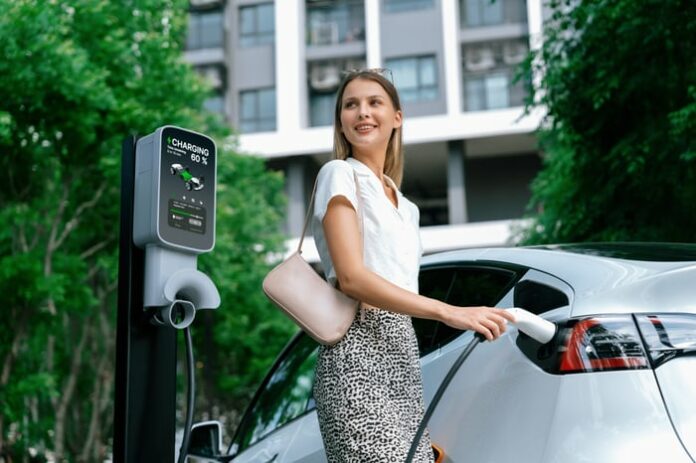2025 Outlook: Will Tesla or Rivian Shine Brighter?
2024 was a challenging year for Tesla (NASDAQ: TSLA) and Rivian (NASDAQ: RIVN), marked by contrasting stock performances. While Tesla’s shares surged, Rivian’s plummeted by about 43%. A portion of Tesla’s success is linked to its recovery post-Donald Trump’s election win, with CEO Elon Musk actively supporting Trump.
Start Your Mornings Smarter! Wake up with Breakfast news in your inbox every market day. Sign Up For Free »
Comparing Deliveries
In 2024, vehicle deliveries for both companies reflected their stock performances. Rivian managed to deliver 51,579 vehicles, a modest growth of 3% from 2023, while Tesla reported nearly 1.79 million deliveries, a slight dip from 1.81 million the previous year.
Rivian’s growth occurred despite production challenges, including a manufacturing pause for upgrades and late-year component shortages. Conversely, Tesla experienced its first annual drop in deliveries due to intense competition and sales difficulties in China and Europe.
Investors are looking forward, focusing on Tesla’s potential in autonomous driving and robotaxi markets rather than just EV sales. The company’s recent cybercab event showcased a two-seat vehicle devoid of traditional controls, targeting a cost of under $30,000, with production aiming to commence before 2027. Nevertheless, details on the technology, range, and safety features remain vague.
Tesla has faced hurdles in reaching a fully autonomous vehicle. The implementation of its Supervised Full Self-Driving (FSD) technology has drawn scrutiny due to several incidents and ongoing investigations. Musk’s advocacy for policy changes regarding crash reporting requirements could ease regulatory approvals for its autonomous innovations.
Currently, Waymo (owned by Alphabet) is the only company offering paid robotaxi services in the U.S., but its lidar-based technology tends to be pricier than Tesla’s. Tesla’s acquisition of lidar sensors raises questions about whether it will integrate them to enhance its offerings. If successful, a cost-effective autonomous robotaxi could present significant market opportunities for Tesla.
Rivian’s Focus on Sustainability
In contrast to Tesla’s expansive vision, Rivian is prioritizing more immediate and achievable goals. The company aims to reach positive gross margins after selling its vehicles at a loss. Key to this plan are enhancements in factory tooling to boost efficiency and lower material costs. A significant breakthrough is Rivian’s introduction of a new zonal architecture, which simplifies the vehicle’s electronic systems, thereby reducing costs.
This new architecture is central to the recently announced partnership with Volkswagen, granting the automaker access to Rivian’s technology in exchange for financial support, contingent upon achieving certain targets. Rivian is also working on the R2 SUV, prided on lower costs around $45,000, due to begin production in early 2026.

Image source: Getty Images.
Investment Decisions for 2025
Both Tesla and Rivian have potential catalysts for 2025. For Tesla, any advancements in autonomous driving and robotaxi services could positively impact its stock, even if sales continue to struggle globally. This segment may become the primary growth driver for Tesla.
For Rivian, attaining positive gross margins and gradually improving those margins throughout the year would be a significant boost. With the company moving past its component shortages and evaluated production levels, achieving this target seems feasible.
If I had to choose between the two, I would view Rivian as the more speculative option. The stock is recovering from a tough year, and it has a realistic path to meeting its gross margin goals while increasing vehicle deliveries. On the other hand, Tesla has already seen major gains, which may limit further upside from any positive developments.
Seizing Investment Opportunities
Ever felt like you missed the chance to invest in successful stocks? Now may be your moment.
Occasionally, our expert analysts issue a “Double Down” stock recommendation for companies poised for significant growth. If you’re concerned about missing your opportunity, consider investing now before it’s too late. The numbers demonstrate impressive returns:
- Nvidia: An investment of $1,000 back in 2009 would now be worth $357,084!*
- Apple: A $1,000 investment from 2008 would have grown to $43,554!*
- Netflix: A $1,000 investment from 2004 would now be valued at $462,766!*
We are now issuing alerts for three outstanding “Double Down” companies, and this opportunity may not last long.
See 3 “Double Down” stocks »
*Stock Advisor returns as of January 13, 2025
Suzanne Frey, an executive at Alphabet, is a member of The Motley Fool’s board of directors. Geoffrey Seiler has positions in Alphabet. The Motley Fool has positions in and recommends Alphabet and Tesla. The Motley Fool recommends Volkswagen Ag. The Motley Fool has a disclosure policy.
The views and opinions expressed herein are the views and opinions of the author and do not necessarily reflect those of Nasdaq, Inc.

